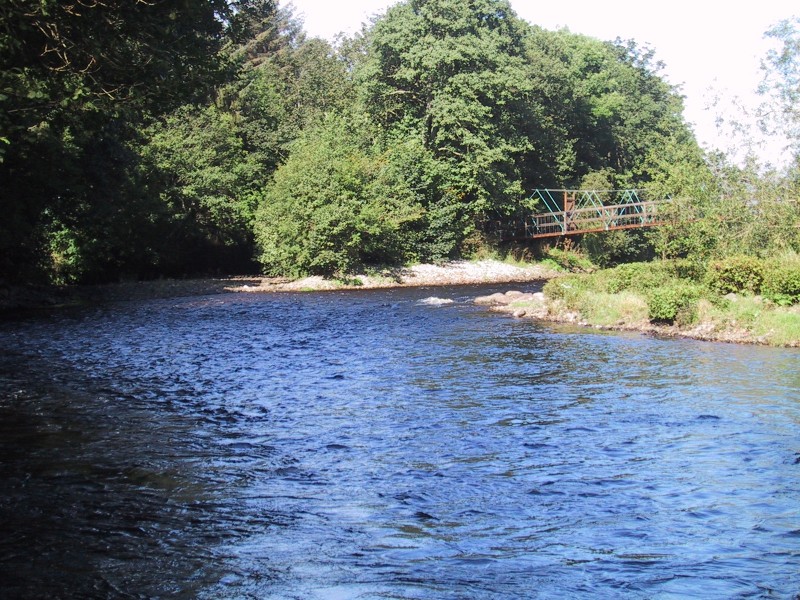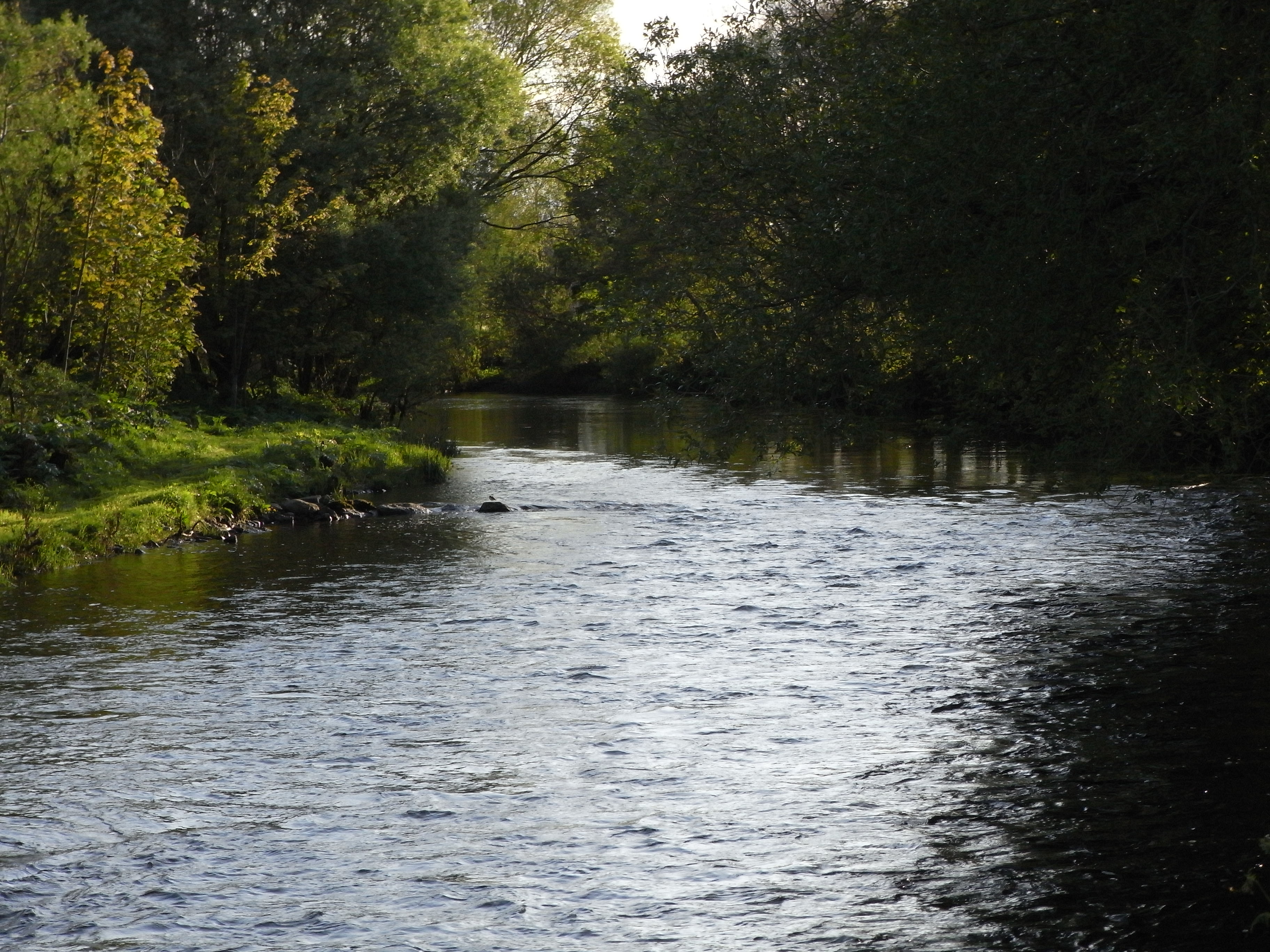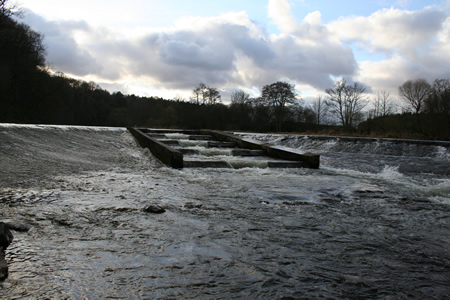These bulletin blogs represent news about Finavon and the South Esk, and my views as a riparian owner. While I may digress at times to write about other places, these are not the views of any other organisation, nor are they designed to promote the interests of any individual or organisation other than Finavon Castle Water and factors affecting the fishery. Tony Andrews
At last there are some good shoals of sea trout in Finavon’s pools. It is not much of a surprise to me that the main run arrived about two weeks late. A discussion with an eminent salmonids scientist at the Scone Game Fair, when he reminded me that the North Sea has taken an unusually long time to warm up after the very cold spring, convinced me that there is no need to be unduly pessimistic about South Esk sea trout – or at least no more than last year or the year before.
The flow into Craigo Stream at the head of the Red Brae Pool. A great place for a big sea trout in the hour before dawn.
My observations of three or four of FCW’s best pools in the unhelpful light of late evening confirmed that there are two or three hundred sea trout spread among these pools, and doubtless others in pools I didn’t visit. I did notice however that the average size of the fish is smaller than normal, although there are a few fish of 3lbs + in evidence too. In general I think the level of abundance at Finavon is healthy, but nothing to shout home about, and certainly nowhere near the levels of the early 1990s.
There are also some MSW salmon in the deeper pools. By now these fish, remnants of the spring run, will be well settled into their freshwater role and probably very hard to catch. A rise in the water level might persuade an occasional fish to take a fly, but in my view they are best left alone to get on up river to spawn.
Those of us who live on the banks of rivers, observing migrations of salmon and sea trout day by day and season by season, sometimes find it difficult to separate the wood from the trees. I try to avoid too much pessimism by keeping the big picture in mind. A small blip in one annual migration, such as with our sea trout this year, is just that – a small blip. If I look at FCW catches on their own I will inevitably have a distorted picture of what is happening within the South Esk catchment and, perhaps more importantly, what is happening regionally (I like the term ‘bio-region’ which describes the coastal and marine habitats of the Scottish east coast where our sea trout feed). The health of the Atlantic Ocean, and its surrounding seas, such as the North Sea or the Celtic Sea, is the much bigger context, the importance of which we are only just starting to grasp. Avoiding pessimism and doomy prognostications of future dearths of both species is a favourite passtime of the angling community. Perhaps we need to take a wider and longer view?
Our fishing effort at FCW is extremely low at present because syndicate members and our visitors have been discouraged by the low water and absence of fish. I hope that will now change because we now have good numbers of fresh sea trout to encourage more late night stints on the water.
TA 10/7



